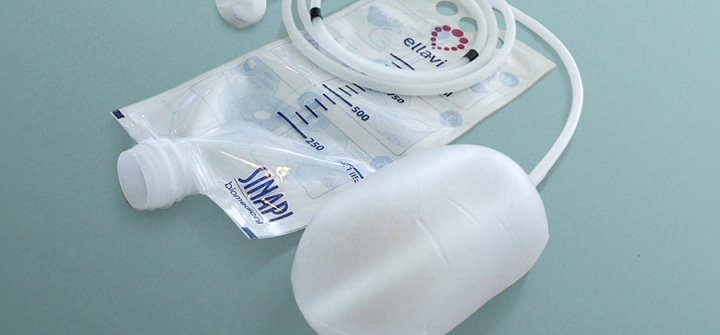Delivering on Innovation for Women's Health
VANCOUVER—The number one killer of women during childbirth is severe postpartum hemorrhage—capable of killing an otherwise healthy woman in less than 2 hours if she does not receive care.
That gives health care workers precious little time to act—and in low-resource countries, they go to some creative lengths.
They have some options, such as uterine compression—manually pressing the outside of the abdomen—which is uncomfortable, and not a popular option with providers or users. Others attempt a makeshift copy a device called a uterine balloon tamponade using condoms or medical gloves, Patricia Coffey, PhD, MPH, a project director at PATH, explained to GHN on the sidelines of the Women Deliver conference in Vancouver.
So her team set out to find alternatives. And this week at Women Deliver, they announced a new option: A device called Ellavi (a slightly catchier name than uterine balloon tamponade), capable of combatting postpartum hemorrhage and accessible for low-resource settings, developed by PATH and Sinapi Biomedical of South Africa.
Coffey explained that existing UBTs, available in most industrialized countries, stop the bleeding quite effectively—but at a cost of $200-250, they are out of reach for many low-resource settings.
By partnering with Sinapi, they were able to create a high-quality product that can be out the door of the factory at $10 (which doesn’t include additional costs like customs and shipping, she noted). The Ellavi model has now passed an important hurdle, achieving CE marking in Europe, signifying that it meets European regulatory requirements—an important mark of confidence that eases the path to market in many countries.
It has been a long process, Coffey explained. “Any time you look at a new innovation, it’s challenging. You have to make sure there is buy-in on the part of the health community, and we spent time working on that aspect.”
But now, they expect to have the product on the shelf—initially just in Kenya and Ghana—by 2020, but with plans to expand.
Don't Dismiss the Diagphragm
Coffey shared news about another innovative device for women's health at Women Deliver: the Nigerian National Agency for Food and Drug Administration recently approved marketing of the Caya®—an updated, more user-friendly version of the diaphragm, giving women in Nigeria now have access to a new women-controlled, nonhormonal contraception option.
The device has been in development since 1994, after the International Conference on Population & Development conference. At that meeting, there was a lot of discussion around the need for women-centered, or user-controlled methods of contraception, and PATH really heard that," Coffey said. And we thought, what about the diaphragm? We then set to work with a group of midwives in Seattle—"the last bastion of diaphragm users with that knowledge," Coffey laughed, and PATH worked with them to figure out what women didn't like about diaphragms, and how to make a more appealing version. That led to the creation of create Caya®, a one-size-fits most, easier to grip, silicone-based design.
The Caya diaphragm will be introduced to women in Nigeria within the next year by DKT International, the largest family planning products and services provider in Nigeria, PATH reports.

On the sidelines of #WD2017, Patricia Coffey of PATH displays Caya, a new self-care contraceptive option for women in Nigeria. Image by Dayna Kerecman Myers
The Ellavi uterine balloon tamponade to combat postpartum hemorrhage. Image courtesy of PATH





